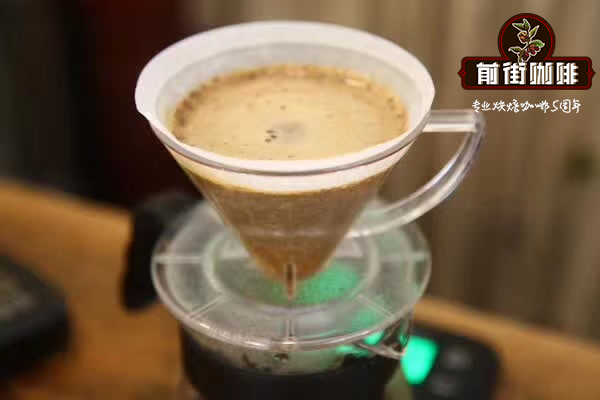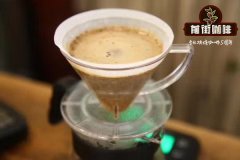The charm of the original place of Rose in the Village of Rose in Ethiopia

Professional coffee knowledge exchange More coffee bean information Please pay attention to coffee workshop (Weixin Official Accounts cafe_style)
Front Street-Ethiopia Guixia Village Manor Introduction
Origin of Guixia Village Manor
In 2007, documentary director Adam Overton and photographer wife Rachel Samuel came across the Gera coffee forest in Banchemaghi while filming a documentary on Li Feng's coffee for the Ethiopian government, and in the process they developed the idea for their own coffee estate and brand.
In 2009, they were lucky enough to meet Willem Boot, the famous mule farm owner and BOP judge, and Willem Boot's idea also provided an opportunity for the Overtons to return to Ethiopia and find the birthplace of Guixia.
Finally they came to Banchimaji, a region of southwest Ethiopia near South Sudan, where there are many places called Gesha villages and where it is most likely to find the original summer.
Adam followed WillemBoot in the forest around the manor to start "exploration", in a dense forest magic wrapped in the jungle, found a variety of wild tree species, the most let them surprise is to find wild rose summer.
Later they learned that this was the Gori Gesha Forest, where the seeds were first discovered. So they collected seeds from native rose trees, sifted them, and planted them in rose village. They decided to establish the estate here and named it Gesha Village Coffee Estate, a 475-hectare coffee farm located about 12 miles from the Gori Gesha Forest.
Unlike most Ethiopian farms, Guixia Village is not a small farm, but a large farm of 500 hectares. It has its own washing plant and laboratory. The whole farm only grows rose summer varieties, not Ethiopian native varieties that cannot be determined generally.
Guixia Village Coffee Varieties
There are three varieties in Guixia Village, named after the explorers who discovered coffee: Gesha1931 and Gori Gesha, and Illubabor provided by the Ethiopian Coffee Research Center.
Gesha1931 was identified by observing the plant morphology, bean shape, size, and its cup test as the closest female parent to Panama rose. The Gori Gesha heirloom variety was collected by the owner of Guixia Village through his own expedition in 2011 from the Gori Gesha wild coffee forest 20 km away from the current Guixia Village farm, and no duplicate samples have been found elsewhere.
From the beginning, the owner of Guixia Village collected seeds of wild Guixia for planting and cultivation in the forest of Gori Guixia. After 7 years of efforts, the remote wilderness forest was continuously extended to the periphery, and the coffee farm of Guixia Village covering an area of 471 hectares was born in this forest land.
In fact, it is completely different from most Ethiopian farms. Guixia Village is not a small farm, but a 500-hectare large farm with its own washing plant and laboratory. The whole farm only grows rose summer varieties, not Ethiopian native species that cannot be determined generally.
Quality control of Guixia Village and grade of coffee beans
Guixia Village is divided into eight small farms, which they call blocks.
In Guixia Village, quality is not compromised at every step of planting and processing. At their coffee laboratory in Addis Ababa, and to SCA's official standards, each batch is carefully selected through a rigorous cup-testing process and subjected to rigorous grading to ensure that the best quality coffee beans are provided to buyers. Finally, there are four levels of coffee, from extremely high-end and delicious curiosities to refined blended chaka, available to coffee markets around the world. What they did was, for each batch, a label traced back to the details of the bean.
Guixia Village has a strict grading system, which is competitive bidding, gold standard, red standard, green standard and card inspection batch. However, due to the fact that Xiao Bian currently has a deep understanding of the batches of gold label, red label and Chaka, Xiao Bian will introduce the cup test, flavor and brewing of these three batches in detail later.
jinbiao
The gold standard only accounts for 5% of the annual output of Guixia Village, which can almost be said to be the same level as the bidding batch. The batches usually selected by competitors from all over the world, such as the WBC World Championships held in the Netherlands in 2018, Australia and Japan champions are the gold standard batches selected for the competition ~
Bakers with high requirements for quality will also purchase, with complete traceability, outstanding flavor and high complexity of each batch, which is the best standard of the estate after bidding.
red Label
Batches with complete traceability have typical summer flavor, flavor intensity and complexity slightly weaker than gold standard batches, and are single product batches with very high cost performance.
Chaka
This is a blend of summer coffee produced in Guixia Village, including three varieties, namely Gori Gesha, Gesha 1931 and Illubabor (Ethiopia's native disease resistant variety).
END
Important Notice :
前街咖啡 FrontStreet Coffee has moved to new addredd:
FrontStreet Coffee Address: 315,Donghua East Road,GuangZhou
Tel:020 38364473
- Prev

Answer the name of Tiger Manteau. | Indonesian official answers about the origin of Tiger Mantez name.
Professional Coffee knowledge Exchange more Coffee Bean Information Please note Coffee Workshop (Wechat account cafe_style) the front street of the Coffee Workshop (official account of Tiger Mante) Indonesia is a country with a group of countries, its main producing areas are located in Yunnan, Java and Lawesi. The northern terrain is relatively high above sea level, the province where Lake Tawa is located and the north of Lake Toba.
- Next

WBC Coffee, Olive Coffee, Coffee Bean, Olive Coffee, Olive Coffee, Coffee, Olive, Coffee, Olive, Olive, O
Professional Coffee knowledge Exchange more Coffee Bean Information Please note Coffee Workshop (Wechat account cafe_style) Front Street-2017 WBC Champion Olive Coffee Coffee how does it taste like SL28 beans, a new product of the 2017 WBC peas? Let's get to know something about Finca Montes El Coro with Xiao Wei.
Related
- What is the standard process for the purpose of coffee cup testing? What is the difference between hand-brewed coffee and cup testing?
- How to use hand-brewed coffee paragon small golden balls? How does cold coffee lock in the aroma of coffee?
- Is American coffee black? What is the difference between American coffee and drip coffee?
- Unexpected! Well-known tea beverage brand Lele Tea will withdraw from the Zhengzhou market!
- Starbucks enters the fashion and beauty industry?! Netizen: Give me an ice American eye cream
- Why can American refills for free? The difference between Americano and American drip pot coffee
- Being chased out of the rain in front of Starbucks?! Store: Sheltering from rain under umbrellas poses a safety hazard
- The white moonlight has changed?! Lucky launches "Big Winter Pear American"
- Hand-brewed coffee three-stage method, high-sweet and universal brewing method to share! What does the high sweet water level of hand-brewed coffee mean?
- What is the difference between raw, refined and full espresso coffee? How to extract espresso and taste good?

